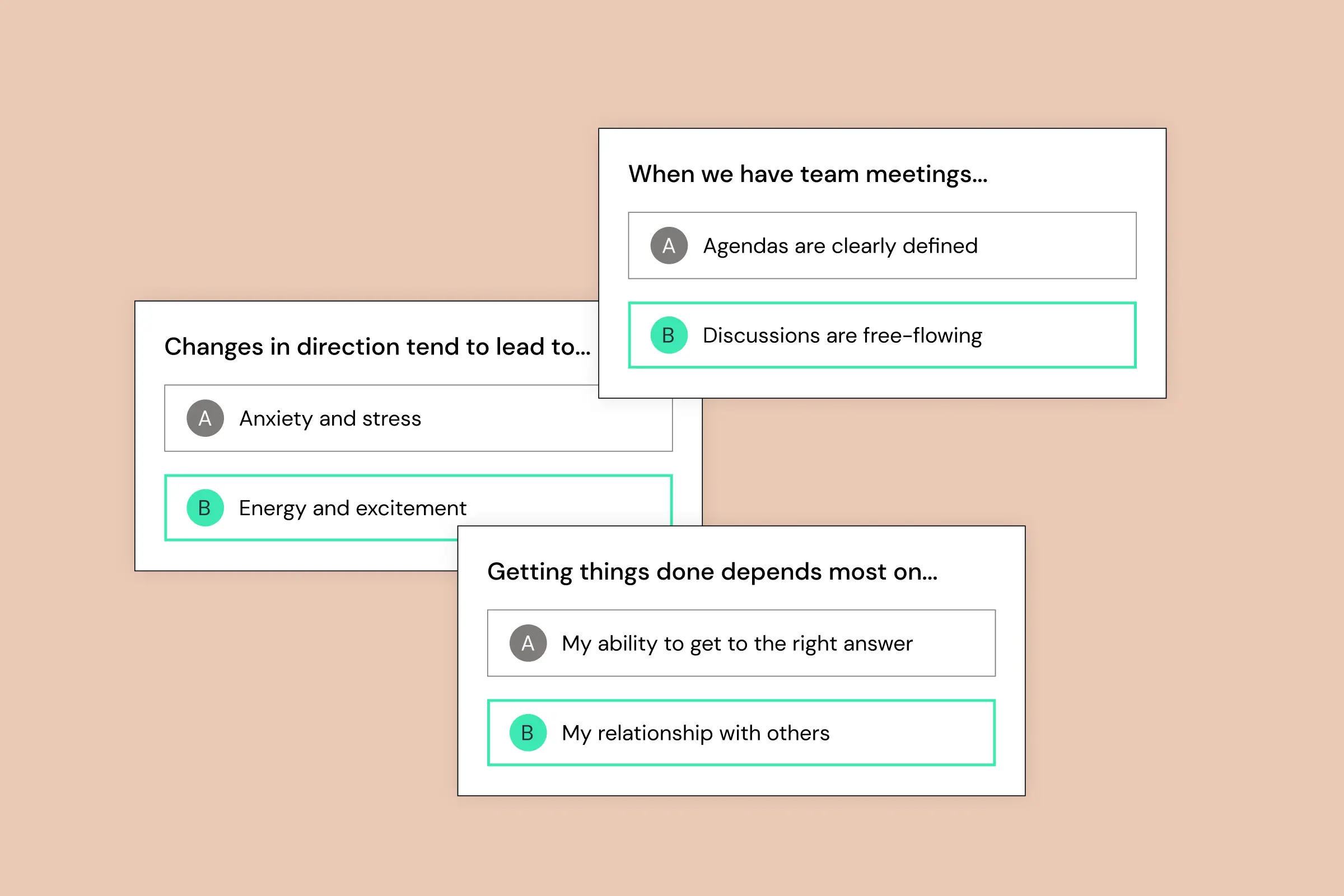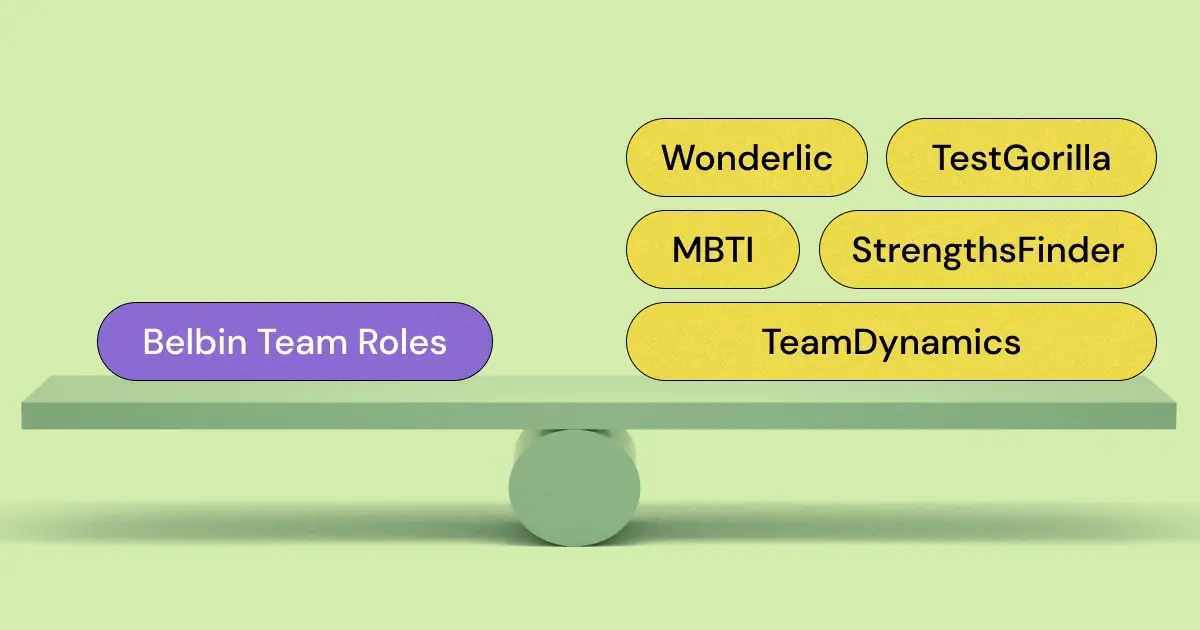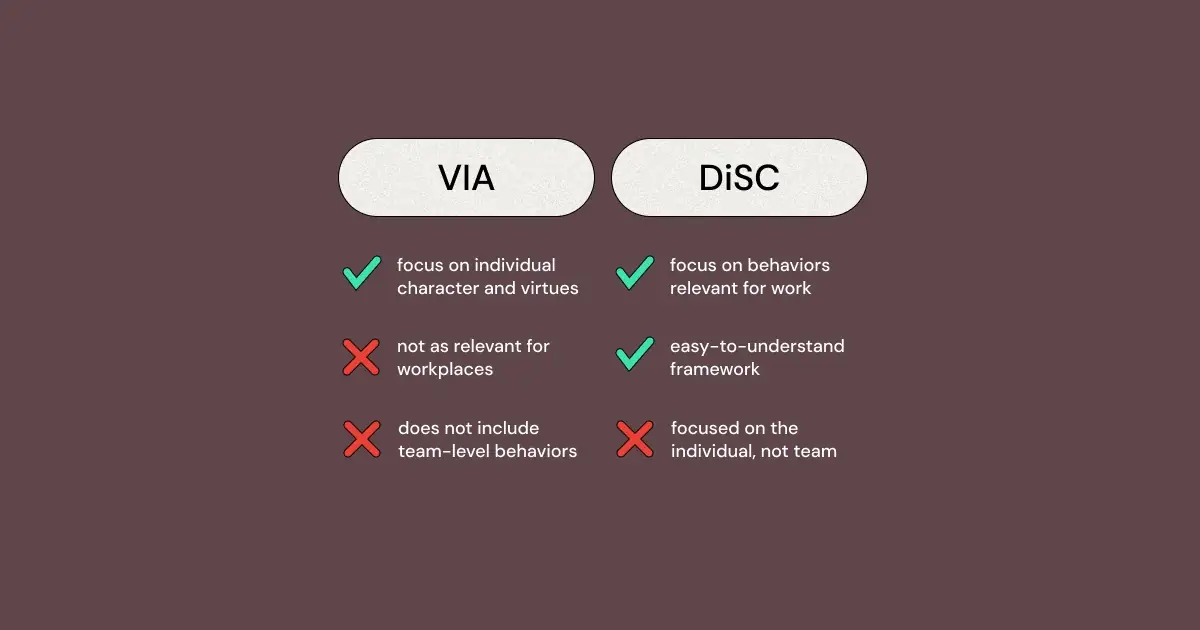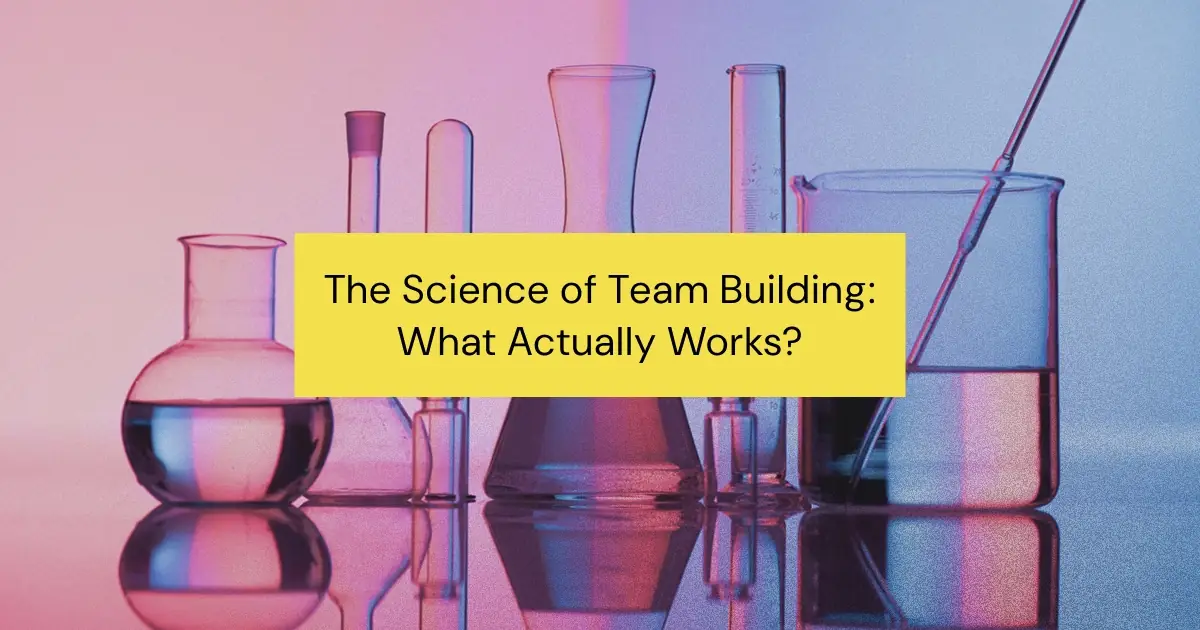When it comes to building a strong, effective team, understanding each member’s strengths and weaknesses is crucial. One popular tool for this is the Belbin Team Roles test. Developed by Dr. Meredith Belbin, this assessment identifies nine different team roles, such as the “Coordinator” or the “Implementer,” each representing a key function within a team. By knowing which roles your team members naturally gravitate toward, you can create a more balanced and productive team dynamic.
However, while Belbin Team Roles is well-known, it’s not the only option available for assessing team dynamics and individual strengths. In this blog post, we’ll explore five of the best alternatives to Belbin Team Roles: StrengthsFinder, TeamDynamics, Wonderlic, MBTI (Myers-Briggs Type Indicator) and Enneagram.
Whether you’re looking to improve collaboration, enhance productivity, or simply gain a deeper understanding of your team’s dynamics, these alternatives to Belbin Team Roles offer valuable insights tailored to various needs. Let’s evaluate each of these tests to see how they compare.
Alternative #1: StrengthsFinder (aka Gallup CliftonStrengths)
StrengthsFinder is an excellent choice for organizations that want to focus on growth, positivity, and the unique strengths of their team members. While Belbin Team Roles provides valuable insights into how a team functions together, it can be limiting in its role-based approach. StrengthsFinder offers a more personalized and flexible framework, encouraging continuous development and allowing for more dynamic team building.
StrengthsFinder, now known as CliftonStrengths, is an assessment developed by Gallup to help individuals discover their unique talents. Unlike many personality tests, which focus on identifying weaknesses or challenges, StrengthsFinder emphasizes the positive—highlighting the top strengths that make each person unique. The test ranks 34 talent themes and identifies your top five strengths, offering a personalized insight into what you naturally do best.
Key Features of StrengthsFinder
- Strengths-based focus: StrengthsFinder identifies what you excel at, helping you leverage your natural talents in work and life.
- 34 talent themes: The assessment categorizes strengths into 34 distinct themes such as Achiever, Activator, or Relator, providing a nuanced understanding of your capabilities.
- Custom reports: After taking the assessment, users receive a detailed report on their top five strengths, including personalized strategies for development.
- Wide application: While originally designed for personal development, StrengthsFinder is widely used in corporate settings to enhance team dynamics and individual performance.
What Makes StrengthsFinder Special
StrengthsFinder’s unique approach lies in its focus on positivity and potential. Rather than categorizing people into fixed types or roles, it identifies dynamic strengths that can be developed over time. This strengths-based approach encourages continuous growth and improvement, helping people become more engaged and productive in their work. The test is also highly personalized, making the insights particularly relevant to the individual, which can lead to greater motivation and satisfaction.
Want to use StrengthsFinder for team building? Check out our free CliftonStrengths team building workshop download!
Practical Applications of StrengthsFinder
StrengthsFinder is highly versatile, making it useful in various professional contexts. Here’s how it can be applied:
- Team building: By understanding the strengths of each team member, managers can assign roles that play to individual talents, leading to a more effective and harmonious team.
- Leadership development: Leaders can use StrengthsFinder to identify their strengths and weaknesses, allowing them to lead more authentically and effectively.
- Career coaching: Individuals can use the insights from StrengthsFinder to make career choices that align with their natural talents, leading to greater job satisfaction.
- Performance improvement: Organizations can use the assessment to place employees in roles where they are more likely to succeed, improving overall productivity.
StrengthsFinder vs. Belbin Team Roles
While both StrengthsFinder and Belbin Team Roles aim to improve team dynamics, they do so in very different ways. Belbin Team Roles focuses on identifying specific roles within a team, such as the “Shaper” or “Completer Finisher,” that people naturally gravitate toward. It’s a useful tool for understanding how a team works together, but it can be somewhat rigid in its classifications.
StrengthsFinder, on the other hand, offers a more flexible and individualized approach. Instead of assigning people to specific roles, it highlights their strengths across a broader spectrum. This allows for more dynamic team building, as managers can mix and match strengths to meet the needs of the project rather than fitting people into pre-defined roles. Additionally, StrengthsFinder’s focus on strengths rather than roles helps foster a more positive and growth-oriented team culture.
Alternative #2: TeamDynamics
TeamDynamics is an excellent option for organizations that prioritize team cohesion and effective collaboration. While Belbin Team Roles offers valuable insights into how individuals fit into specific team roles, it may not capture the full complexity of team dynamics. TeamDynamics provides a more comprehensive assessment, focusing on both the individual and the team as a whole. This makes it a more effective tool for building strong, productive teams that can work together seamlessly to achieve their goals. If you’re looking for a tool that provides deeper insights into team interactions and offers actionable strategies for improvement, TeamDynamics may be the superior choice.
TeamDynamics is a comprehensive assessment designed specifically to evaluate how the team functions as a whole. Unlike many personality tests that focus solely on individual traits, TeamDynamics assesses both the personality of the entire team and how each person relates to the group. This makes it an ideal tool for professional environments where collaboration and effective teamwork are critical to success.
Key Features of TeamDynamics
- Team-focused assessment: TeamDynamics evaluates not just individual personalities but also how these personalities interact within the team.
- Relational insights: The assessment provides detailed insights into how each member relates to the team’s dynamics, helping to identify strengths and areas for improvement.
- Custom team reports: After completing the assessment, teams receive a comprehensive report outlining the collective strengths, potential challenges, and strategies for optimizing team performance.
- Actionable feedback: TeamDynamics offers practical recommendations for improving team cohesion, communication, and overall effectiveness.
What Makes TeamDynamics Special
TeamDynamics stands out because of its dual focus on both individual and team dynamics. While many assessments stop at identifying individual strengths or roles, TeamDynamics goes a step further by analyzing how these individual traits interact within the team context. This holistic approach ensures that the insights are not only relevant to each team member but also crucial for the team’s overall success. The result is a more cohesive, productive, and harmonious work environment where everyone understands their role and how they contribute to the team’s goals.
Want to see what TeamDynamics offers? Download a preview of TeamDynamics today!
Practical Applications of TeamDynamics
TeamDynamics is especially valuable in professional settings where teamwork is essential. Here’s how it can be applied:
- Team building: By understanding both individual and collective dynamics, managers can create more balanced and effective teams.
- Conflict resolution: The assessment identifies potential friction points within the team, offering strategies to address and resolve conflicts before they escalate.
- Project management: TeamDynamics helps in assigning roles and responsibilities based on how each member’s personality complements the team, leading to smoother project execution.
- Leadership development: Leaders can use the insights to better understand how to motivate their teams, improve communication, and lead more effectively.
TeamDynamics vs. Belbin Team Roles
While both TeamDynamics and Belbin Team Roles aim to enhance team performance, their approaches differ significantly. Belbin Team Roles focuses on identifying specific roles within a team, which can help in understanding how team members might interact. However, this approach can be somewhat limited because it categorizes individuals into fixed roles, potentially overlooking the complexity of team interactions.
TeamDynamics offers a more nuanced and holistic approach. Instead of fitting individuals into pre-determined roles, it assesses how each person’s personality influences the team and vice versa. This provides a richer understanding of team dynamics, allowing for more tailored interventions and strategies. Additionally, because TeamDynamics assesses the entire team, it offers insights that are directly applicable to improving team cohesion and performance, rather than just focusing on individual roles.
{{inline-cta}}
Alternative #3: Wonderlic
Wonderlic is an excellent choice for organizations that need to assess cognitive abilities as part of their team-building or hiring process. While Belbin Team Roles offers insights into how individuals fit into specific roles based on personality, it may not address the cognitive capabilities required for success in certain roles. Wonderlic provides a clear, objective measure of intelligence, helping organizations build teams that are not only collaborative but also intellectually capable. If you’re looking for a tool that assesses both the mental sharpness and potential of your team members, Wonderlic may be the superior choice.
The Wonderlic test is a cognitive ability assessment widely used in hiring and career development processes. Originally developed in the 1930s, the test is designed to measure general intelligence and problem-solving abilities. It’s a quick yet effective way to gauge a candidate’s aptitude for learning, critical thinking, and adapting to new situations. Wonderlic is often employed by organizations to ensure they hire individuals with the cognitive skills necessary for success in specific roles.
Key Features of Wonderlic
- Cognitive focus: Unlike personality tests, Wonderlic measures cognitive abilities such as problem-solving, logical reasoning, and the ability to process information quickly.
- Quick assessment: The test typically takes just 12 minutes, making it a fast and efficient tool for evaluating potential hires or team members.
- Versatile application: Wonderlic is used across various industries to assess candidates for roles that require strong cognitive skills.
- Objective results: The test provides a numerical score that reflects an individual’s cognitive abilities, offering a clear, objective measure for comparison.
What Makes Wonderlic Special
Wonderlic is unique because it focuses on cognitive abilities rather than personality traits. This makes it particularly valuable in contexts where mental acuity and the ability to think on one’s feet are crucial. The test’s speed and efficiency also make it an attractive option for organizations looking to quickly assess a large number of candidates or team members. Moreover, its long history and widespread use have established it as a trusted and reliable tool for assessing cognitive potential.
Practical Applications of Wonderlic
Wonderlic’s versatility makes it useful in a variety of professional contexts. Here’s how it can be applied:
- Hiring decisions: Organizations use Wonderlic to assess the cognitive abilities of job candidates, ensuring they select individuals who are likely to succeed in roles that require strong problem-solving skills.
- Team building: By understanding the cognitive strengths of team members, managers can create teams that are not only well-balanced in personality but also in intellectual capability.
- Succession planning: Wonderlic can help identify employees with the cognitive potential to take on more complex roles within the organization, aiding in leadership development.
- Training needs assessment: The test can also identify areas where employees may need additional training or support to reach their full potential.
Wonderlic vs. Belbin Team Roles
While both Wonderlic and Belbin Team Roles are valuable tools for understanding team dynamics, they serve different purposes. Belbin Team Roles focuses on identifying specific roles within a team based on personality traits, which can help in understanding how team members interact and collaborate. However, this approach may not fully capture an individual’s cognitive abilities or potential for problem-solving.
Wonderlic, on the other hand, provides an objective measure of cognitive ability, which is crucial for roles that require quick thinking, learning, and adaptability. By focusing on intelligence rather than personality, Wonderlic offers a different perspective on team composition. It ensures that teams are not only well-rounded in terms of personality but also equipped with the cognitive skills necessary to tackle complex challenges. This can be particularly beneficial in fast-paced or high-stakes environments where quick decision-making is essential.
Alternative #4: MBTI
MBTI is an excellent choice for organizations that want to gain a deeper understanding of personality. While Belbin Team Roles offers valuable insights into how individuals fit into specific roles within a team, it may not capture the full complexity of personality and behavior. MBTI provides a more nuanced and comprehensive understanding of personality, helping individuals work together more effectively by appreciating and leveraging their differences. If you’re looking for a tool that enhances communication, fosters collaboration, and provides a deeper understanding of interpersonal dynamics, MBTI may be the better option.
The Myers-Briggs Type Indicator (MBTI) is one of the most widely recognized personality assessments in the world. Developed by Katharine Cook Briggs and her daughter Isabel Briggs Myers, MBTI is based on Carl Jung’s theory of psychological types. The assessment categorizes individuals into 16 distinct personality types, each represented by a combination of four letters (e.g., INFP, ESTJ). These letters correspond to preferences in four areas: Extraversion vs. Introversion, Sensing vs. Intuition, Thinking vs. Feeling, and Judging vs. Perceiving. MBTI provides deep insights into how people perceive the world, make decisions, and interact with others.
Key Features of MBTI
- 16 personality types: MBTI offers a nuanced understanding of personality by categorizing individuals into one of 16 distinct types.
- Focus on preferences: The assessment explores personal preferences in four key areas, helping individuals understand their natural inclinations and how they affect their behavior.
- Extensive research: With decades of use and research, MBTI is a well-established tool for understanding personality and improving interpersonal dynamics.
What Makes MBTI Special
MBTI’s strength lies in its ability to provide a comprehensive and detailed understanding of personality. Unlike many other personality tests, MBTI doesn’t just focus on specific traits or behaviors; it delves into the underlying preferences that shape how people think, feel, and act. This makes MBTI a powerful tool for improving communication, resolving conflicts, and building more effective teams. By understanding their own and others’ MBTI types, team members can better appreciate differences, leading to greater harmony and collaboration.
Want to use MBTI for team building? Check out our free MBTI team building workshop download!
Practical Applications of MBTI
MBTI is incredibly versatile and can be applied in numerous professional contexts. Here’s how it can be used:
- Communication improvement: MBTI helps individuals understand their communication style and adapt it to better interact with others, reducing misunderstandings and enhancing teamwork.
- Leadership development: Leaders can use MBTI to gain insight into their leadership style and learn how to manage and motivate people with different personality types more effectively.
- Conflict resolution: Understanding the MBTI types involved in a conflict can provide insights into the root causes and offer strategies for resolution that respect each person’s preferences.
Comparison of MBTI to Belbin Team Roles
While both MBTI and Belbin Team Roles are used to enhance team performance, they take different approaches. Belbin Team Roles identifies specific roles within a team based on personality traits, such as the “Coordinator” or “Teamworker,” which can help in understanding how team members might naturally contribute to group efforts. However, this role-based approach can be somewhat limiting, as it categorizes individuals into fixed roles.
MBTI, on the other hand, provides a more holistic understanding of personality by exploring core preferences and how they influence behavior. This allows for a more flexible approach to team building, where individuals are not confined to specific roles but can contribute in ways that align with their natural preferences. Additionally, MBTI’s focus on communication styles and decision-making processes offers deeper insights into how team members can work together more effectively, making it a more comprehensive tool for improving team dynamics.
Alternative #5: Enneagram
The Enneagram is an excellent choice for organizations that want to foster deeper understanding and empathy within their teams. While Belbin Team Roles offers valuable insights into how individuals fit into specific roles, it may not fully capture the complexity of personality and motivation. The Enneagram provides a more holistic and dynamic understanding of personality, helping teams not only work together more effectively but also grow together. If you’re looking for a tool that delves deeper into the motivations behind behavior and offers a flexible approach to team development, the Enneagram may be the superior choice.
The Enneagram is a personality system that identifies nine core types, each representing a distinct way of thinking, feeling, and behaving. Unlike many other personality assessments, the Enneagram delves deeply into the motivations, fears, and desires that drive each type. These nine types are interconnected, offering insights into how individuals might react under stress or in growth. The Enneagram is often used for personal development, team building, and improving interpersonal relationships.
Key Features of the Enneagram
- Nine distinct personality types: Each Enneagram type provides a comprehensive understanding of core motivations, fears, and desires.
- Focus on motivation: The Enneagram goes beyond behavior to explore why people act the way they do, offering deeper insights into personality.
- Dynamic system: The Enneagram recognizes that people can move between different types under stress or growth, offering a more fluid understanding of personality.
- Holistic approach: By addressing emotional, cognitive, and behavioral aspects of personality, the Enneagram provides a well-rounded view of how individuals function in different contexts.
What Makes the Enneagram Special
The Enneagram is unique because of its focus on the underlying motivations behind behavior. While many personality assessments categorize individuals based on observable traits, the Enneagram digs deeper to uncover the “why” behind these traits. This makes it a powerful tool for personal growth and improving team dynamics, as it helps individuals and teams understand not just what they do, but why they do it. The Enneagram’s dynamic nature, which allows for movement between types, also provides a more flexible and realistic view of personality.
Want to use the Enneagram for team building? Check out our free Enneagram team building download!
Practical Applications of the Enneagram
The Enneagram is particularly useful in environments where understanding motivation and behavior is key to success. Here’s how it can be applied:
- Team building: The Enneagram helps teams understand the diverse motivations driving their members, fostering empathy and improving collaboration.
- Conflict resolution: By understanding the core fears and desires of different types, teams can address conflicts more effectively, finding resolutions that resonate with all parties.
- Leadership development: Leaders can use the Enneagram to better understand their own leadership style and how it impacts their team, as well as how to motivate different types effectively.
- Personal development: Individuals can use the Enneagram to gain insights into their own behavior and work towards personal growth, improving their overall effectiveness within a team.
The Enneagram vs. Belbin Team Roles
While both the Enneagram and Belbin Team Roles aim to improve team dynamics, they offer different perspectives. Belbin Team Roles focuses on identifying specific roles within a team, such as the “Shaper” or “Monitor Evaluator,” which helps in understanding how team members might contribute to the group’s success. However, this approach can be somewhat restrictive, as it classifies individuals into fixed roles based on observable behaviors.
The Enneagram, on the other hand, offers a more profound understanding of personality by focusing on core motivations and fears. This deeper insight allows for more meaningful connections between team members, as it encourages empathy and understanding of each person’s inner world. The Enneagram’s dynamic approach also recognizes that people are not static and can grow or shift under different circumstances, making it a more flexible tool for long-term team development.
Coparing the Top 5 Alternatives to Belbin Team Roles
So which of these leading alternatives to Belbin Team Roles is right for you and your goals? Take a look at this comparison table to find out!
| Tool |
Primary Focus |
Best For |
Key Features |
| StrengthsFinder (Gallup CliftonStrengths) |
Individual Strengths |
Personal development and maximizing individual potential |
34 talent themes, strengths-based, encourages growth mindset |
| TeamDynamics |
Team Dynamics and Cohesion |
Managers and teams focused on improving team performance |
Team-oriented, evaluates both individual and collective team behaviors, provides actionable team-building insights |
| Wonderlic |
Cognitive Abilities |
Hiring and assessing intellectual capabilities |
Measures problem-solving, cognitive speed, and adaptability |
| MBTI (Myers-Briggs Type Indicator) |
Personality Preferences |
Improving interpersonal dynamics and communication |
16 personality types, preference-focused, versatile for both personal and professional use |
| Enneagram |
Core Motivations and Fears |
Personal growth and improving team empathy |
Nine personality types, dynamic model, fosters empathy |
Conclusion
Choosing the right personality assessment for your team can significantly impact your organization’s success. While the Belbin Team Roles test offers valuable insights into how individuals fit into specific team roles, it may not fully capture the complexity and dynamics of team interactions. Here’s a quick recap of how some top alternatives compare:
- StrengthsFinder focuses on individual strengths, helping people leverage their natural talents to perform at their best.
- MBTI (Myers-Briggs Type Indicator) provides a comprehensive understanding of personality preferences, improving communication and collaboration.
- Wonderlic measures cognitive abilities, ensuring teams have the mental acuity necessary for problem-solving and quick thinking.
- Enneagram delves into core motivations and fears, fostering deeper empathy and understanding within teams.
However, TeamDynamics stands out as the best choice for most workplace settings. Here’s why:
- Holistic Team Assessment: Unlike other tests that primarily focus on individual traits or roles, TeamDynamics focuses primarily on the team's behaviors and norms, as well as how individuals' preferences relate to those behaviors. This comprehensive approach ensures that the insights are relevant and actionable for the entire team.
- Practical and Actionable Feedback: The custom team reports generated by TeamDynamics offer practical recommendations for improving communication, resolving conflicts, and optimizing team performance. This actionable feedback is invaluable for managers looking to create high-performing teams.
- Focus on Team Building: With its dual focus on individual and team dynamics, TeamDynamics is specifically designed for professional environments where effective collaboration is crucial. It helps managers build cohesive teams that can work together seamlessly to achieve their goals.
In conclusion, while Belbin Team Roles and other personality assessments provide valuable insights, TeamDynamics offers a more comprehensive and practical approach to team building. By focusing on both individual and team dynamics, it helps create a harmonious and productive work environment. If you’re looking for a tool that not only helps you understand your team but also empowers them to thrive, TeamDynamics is likely the right choice for your organization. Try TeamDynamics today and see how it can unlock your team’s full potential.




.png)








































